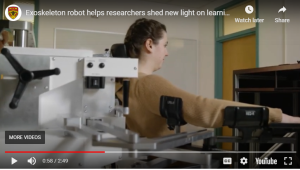The Cellular Neurobiology Research Unit led by Dr. Michel Cayouette at the Montreal Clinical Research Institute (IRCM), and also Full Research Professor, Department of Medicine at Université de Montréal, has identified a key mechanism involved in the growth of nerve cells that are critical to mediate binocular vision, which allows us to see the world in 3D.
The marvel of human 3D vision
To see the world in 3D, our eyes look at an object from two different parts of the retina, a thin layer tissue at the back of the eyes that transforms light into electrical signals used by nerve cells to communicate. The overlap between these two fields of vision allows us to determine the depth, distance and speed of an object and make fast, sometimes life saving decisions. Crucial for this process is the proper growth of nerves from the eye to the brain. When these nerve cells called retinal ganglion cells send projections to the brain via the optic nerve, they either remain on the same side or cross over to the other half of the brain. It is the balance of these projections that allows us to see the world in 3D, but how exactly this is controlled remains poorly understood.
In the study, the team of scientists identified a gene called Pou3f1 that acts as a major regulator controlling the expression of dozens of other genes, which together generate the full instructions to ensure retinal ganglion cells send projections that cross to the opposite hemisphere of the brain. Furthermore, the team showed that expression of Pou3f1 in retinal stem cells is sufficient to force them to become retinal ganglion cells sending projections to the optic nerve.
The work from the IRCM group published in the journal Cell Reports provides an important advance towards solving this mystery. The research was funded by the Canadian Institutes of Health Research.
Read the full story on the Montreal Clinical Research Institute website: How we see the world in 3D.



